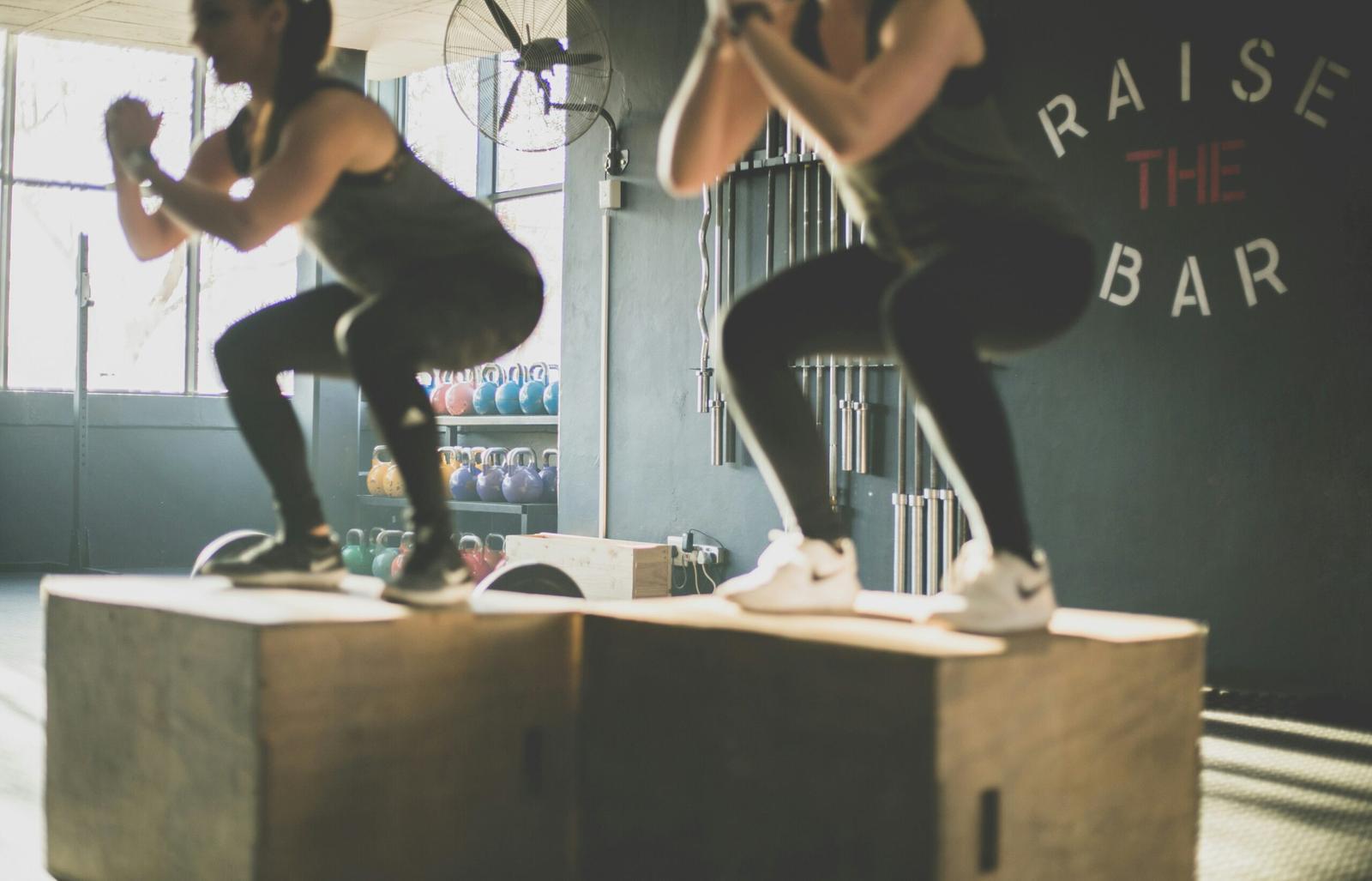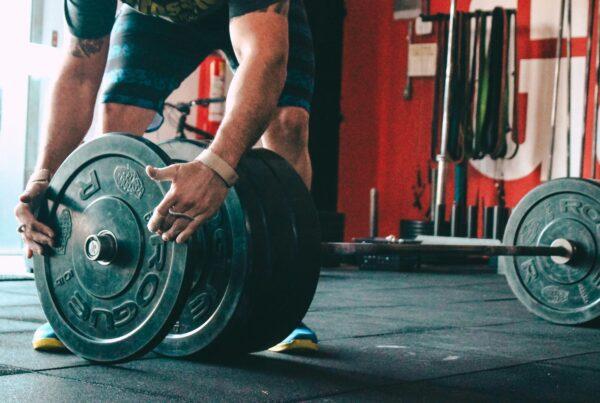Have you ever felt a twinge or a sharp knee pain during squats? You’re not alone—knee discomfort is a common issue that affects many fitness enthusiasts. Various factors can lead to this painful experience, from knee injury to a foundational flaw in proper squat form. But don’t fret; understanding the underlying knee pain causes can empower you to make effective workout plan adjustments. These tweaks can prevent discomfort and protect your knee health, allowing you to continue enjoying the benefits of your fitness routine. Put those worries aside because there are plenty of alternative exercises and techniques you can adopt to keep squatting safely and effectively.
Key Takeaways
- Discover the reasons behind your knee pain during squats and how to mitigate it.
- Understand how proper squat form can significantly reduce the risk of knee strain and injuries.
- Explore alternative exercises that offer similar benefits as squats without exacerbating knee discomfort.
- Learn the importance of regular workout plan adjustments to match your body’s changing needs and abilities.
- Realize that not all knee pain indicates serious damage and can often be remedied with the right approach and care.
Understanding Knee Anatomy and Squat Mechanics
Experiencing knee pain during squats can be a significant deterrent for staying active. To effectively address this discomfort, it’s crucial to recognize the interconnected roles of knee alignment, hip flexor tightness, and muscle strength. Let’s delve into the mechanics and anatomy that play critical parts in maintaining knee health during one of the most fundamental exercises: the squat.
Weak glutes often contribute more to knee pain than many realize. When your gluteal muscles are not strong enough, they fail to adequately support the pelvis during a squat, leading to increased pressure on your knees. Likewise, hip flexor tightness can alter the natural movement of your hips, which impacts your lower body’s kinetic chain and, consequently, your knee alignment.
Now, let’s focus on how you can assess your squat mechanics and make necessary modifications to alleviate and prevent knee pain.
- Ensure your feet are hip-width apart, with toes pointing forward or slightly outwards.
- As you descend, keep your knees in line with your feet. Never let them collapse inward.
- Drive through your heels and engage your glutes as you rise to the starting position.
- Maintain a straight back and engaged core to support your lower body.
Here’s a quick reference to identify what may cause knee pain during squats and how to rectify it:
| Issue | Cause | Solution |
|---|---|---|
| Knee Pain During Squats | Weak Glutes | Glute Strengthening Exercises |
| Improper Knee Alignment | Hip Flexor Tightness | Hip Flexor Stretches |
| Stress on Knees | Limited Ankle Mobility | Ankle Mobility Exercises |
| Pain in Front of Knee | Patellar Tendinitis | Modified Squat Depth |
Remember, it’s not just about making immediate changes, but also about being consistent with your efforts. Regularly incorporating hip flexor stretches and strengthening your glutes can gradually improve knee alignment and reduce knee pain causes. Stay patient, keep your squat mechanics in check, and you’ll likely find your knee discomfort becoming a thing of the past. Always consult a fitness professional if your pain persists.
Knee Pain During Squats: Identifying the Pain
It’s no secret that squats are a powerhouse move for lower body strength. But when you’re experiencing discomfort, it’s important to understand the root of knee pain during squats and how your squat form may be contributing to it. By recognizing the types of pain and the common misunderstandings, you can take proactive steps to correct your form, address muscle imbalances, and keep your knees healthy.
Types of Knee Pain Experienced During Squats
When lower body workouts lead to discomfort, deciphering the type of knee pain you’re feeling is the first step. Some may feel a dull ache after their regimen, which typically is a sign of muscle fatigue or minor strain. Sharp pain, on the other hand, often flags a more distinct issue in your knee alignment or muscle control, potentially from weak glutes or hip flexor tightness affecting your squat motion. Knowing the sort of pain and its intensity can guide you towards a safer technique and necessary muscle strengthening.
Common Misconceptions About Knee Pain During Squats
Amidst fitness circles, some perpetuate the myth that squats are inherently bad for your knees and that pain should be expected. Dispel this rumor; squats, when done with proper squat form, are not only safe but beneficial for knee joint health. Another popular fallacy is that your knees must never surpass your toes—a piece of advice that lacks context and fails to consider individual body mechanics and flexibility. Thoroughly educating yourself on these misconceptions allows you to adjust and refine your squat technique, dodge knee pain causes, and maintain optimal knee alignment.
Sharp vs Dull Pain: What It Can Indicate
Identifying whether the discomfort is a sharp jab or a broad ache can hint at different conditions or needs for your knees. Sharp, pinpointed pain might suggest a misalignment or imbalance, possibly due to hip flexor tightness pulling the thigh forward, or weak glutes failing to provide ample support for your knee joint. The achy feeling post-workout tends to be less alarming, often resolved with proper rest and recovery. However, neither symptom should be ignored – both tell tales of your body’s condition and needs.
| Pain Type | Possible Cause | Next Steps |
|---|---|---|
| Sharp Pain | Inadequate knee alignment, weak glutes, tight hip flexors | Assess and improve form, strengthen muscles, stretch tight areas |
| Dull Ache | Muscle fatigue, minor strains | Ensure proper recovery, moderate workout intensity |
By being attuned to the type and cause of knee pain, you can address these issues more effectively, leading to smarter workouts and healthier knees. Remember, knee pain is a signal, not just a setback. Listen to your body, refine your proper squat form, and trust in your ability to turn discomfort into growth.
Proper Squat Form to Protect Your Knees
Mastering the proper squat form can be a game-changer when it comes to preventing and reducing knee pain. By refining foot placement, knee alignment, and the depth of your squat, you are establishing a solid base for a pain-free strength training routine. Let’s focus on the critical elements that ensure your knees remain protected while you build strength and flexibility through your squats.
The Role of Foot Placement and Knee Alignment
While the squat is a basic movement, its effectiveness is deeply rooted in fine details like foot placement and knee alignment—two pillars of knee pain causes prevention. Ensuring your feet are flat and hip-width apart sets the stage for optimal balance and force distribution. It’s crucial to align your knees over your feet during the squat motion to avoid undue stress on the knee joint. This attention to alignment helps safeguard your knees from injury and makes each rep that much more effective.
Engaging Core and Glutes for Knee Stability
Reducing knee pain isn’t just about the knees; it’s also about engaging the supporting cast of muscles. Your core and glutes are essential for maintaining stability throughout the squat movement. Activating these muscle groups takes some of the loads off your knees and distributes it to stronger, more capable muscles, which can dramatically improve your knee alignment and pain levels.
Adjusting Squat Depth and Torso Angle
Depth and angle adjustments in your squat can be tailored to your body’s unique mechanics. Not everyone can or should squat to the same depth, and that’s okay. Personalizing your squat to your flexibility and comfort zone can help mitigate knee discomfort, all while you perform strengthening exercises effectively. Remember, technique trumps depth every time; maintain a straight spine and adjust your torso angle to prevent overarching or excessive leaning, which can add to knee strain.
Integrating mobility exercises into your routine enhances the squat experience, lending to improved flexibility and joint function. Alleviating knee pain can often be a matter of gentle, directed movements that build strength without overtaxing your joints. Allow your body to guide you, and incorporate these adjustments to find your sweet spot for the perfect squat.
Remember, addressing knee pain can be as simple as taking a step back and drilling into the basics of your squat form. Be patient and persistent, and your knees will thank you. Incorporate these pieces of advice into your next workout, and you’ll not only protect your knees but also improve your overall squat performance.
 Risk Factors Contributing to Knee Pain During Squats
Risk Factors Contributing to Knee Pain During Squats
As you embark on your journey to stronger legs and glutes, it’s essential to be aware of the common culprits behind knee pain during squats. Several factors can off-balance your form, and understanding them can help you make workout plan adjustments that will keep your knees happy and healthy.
- Weak Glutes: Your gluteal muscles are key stabilizers for your hips and knees. Without their proper engagement, you may end up compensating in ways that put undue stress on your knees.
- Hip Flexor Tightness: Tightness in the hip flexors can pull your pelvis forward, altering the way you squat and placing extra pressure on your knees.
- Knee Alignment: Strive to keep your knees in line with your toes. Deviation inward or outward can lead to discomfort and potential injury over time.
Let’s delve deeper by looking at how these factors impact your knee health.
| Risk Factor | Consequences | Preventative Actions |
|---|---|---|
| Weak Glutes | Increased knee valgus (knees collapsing inwards) | Implement targeted strength exercises for the glutes |
| Hip Flexor Tightness | Anterior pelvic tilt affecting squat depth | Incorporate daily stretching and mobility work |
| Improper Knee Alignment | Imbalance and uneven force distribution | Train with cues to maintain alignment over toes |
Addressing these issues won’t just alleviate your knee pain causes; it will elevate your entire squatting experience. Remember, your knees are precious – they deserve your care and attention. Make sure to keep those hip flexors supple, strengthen those glutes, and maintain proper knee alignment. The power is in your hands – or rather, in your legs!
Exercise Modifications to Alleviate Knee Discomfort
If you’ve ever experienced knee pain during squats, you’re not alone. Thankfully, a few strategic adjustments to your workout routine can help you maintain your fitness goals while keeping discomfort at bay. It’s time to explore some squat variations and other alternative exercises that place less strain on the knees. Integrating a dynamic warm-up and thorough cool-down with stretching can further support your knee health. Additionally, focusing on strengthening exercises to fortify the muscles around your knees is crucial in preventing future pain.
Squat Variations for Reduced Knee Strain
Switching up your squat routine with variations can ease knee stress without sacrificing the benefits of this compound movement. Consider incorporating box squats that allow you to control squat depth and perfect your form, or try sumo squats to shift the load and work different muscle groups. For those looking to minimize weight bearing, wall squats with an exercise ball provide great muscle engagement with less joint pressure.
Warm-Up and Cool-Down Strategies
Never underestimate the power of a good warm-up and cool-down. They are your allies in knee pain prevention. Start with a gentle cardio warm-up to increase blood flow, followed by dynamic stretches such as leg swings and lunges. Post-workout, indulge in a cool-down that gradually lowers your heart rate and includes static stretching, which can help in reducing muscle tightness and enhancing flexibility.
Incorporating Strengthening and Stretching Exercises
Strengthening the muscles that support your knee joint is an essential step towards reducing discomfort. Exercises targeting your quadriceps, hamstrings, and especially your glutes can provide the reinforcement your knees need. Meanwhile, stretches aimed at increasing flexibility in your hip flexors, calves, and ankles will enable a fuller range of motion, making your squat practice more effective and comfortable.
| Exercise | Target Muscle | Benefits |
|---|---|---|
| Glute Bridges | Gluteus Maximus | Strengthens posterior chain supporting knee stability |
| Quadriceps Stretch | Quadriceps | Improves flexibility, reduces tension on the knee |
| Hamstring Curls | Hamstrings | Enhances strength in the back of the leg |
| Calf Raises | Gastrocnemius and Soleus | Builds ankle stability and reduces knee load |
By incorporating these exercises and squat variations into your routine, along with proper warm-up and cool-down practices, you can significantly alleviate knee discomfort. Your journey to a pain-free squat session is well on its way. Keep pushing forward, and remember, your knees have the potential to be as strong and flexible as you allow them to be.
 When to Seek Professional Help: Knee Injuries and Physical Therapy
When to Seek Professional Help: Knee Injuries and Physical Therapy
Squatting is a fundamental exercise that, if performed improperly, can lead to discomfort or even injury. Recognizing when to adjust your workout plan or seek medical intervention can be pivotal in maintaining your knee health. While minor tweaks and pains can often be managed with rest and appropriate modifications, there are occasions where the expertise of a healthcare provider is necessary.
Understanding Overuse and Acute Knee Injuries
Both overuse and acute knee injuries can disrupt your exercise routine and warrant professional advice. Overuse injuries occur gradually over time and are common among those with intense workout schedules or insufficient rest between activities. Acute injuries, on the other hand, result from sudden trauma to the knee. An accurate diagnosis is crucial in creating an effective rehabilitation plan that addresses the root causes rather than just the symptoms.
The Role of Physical Therapy in Rehabilitation
Physical therapy plays an instrumental role in recovering from a knee injury. Through a series of targeted exercises and personalized treatment plans, physical therapists can help you strengthen and stabilize your knee joint, aiding in a faster and safer return to activity. They can also provide valuable education on knee pain causes and offer strategies for future injury prevention, ensuring that you stay active without sacrificing your knee health.
Warning Signs That Indicate a Need for Medical Attention
It’s imperative to recognize the warning signs that may indicate a more severe condition requiring medical attention. Symptoms like persistent or excessive swelling, severe pain that doesn’t subside with rest, a popping or crunching noise at the time of injury, or reduced range of motion can all suggest significant issues. If you experience any of these symptoms, it’s time to consult a healthcare professional and possibly seek physical therapy to aid recovery.
Your health should come first, prompting timely workout plan adjustments when you’re faced with a potential knee injury. Keeping a vigilant eye on knee pain causes and the signs of an overuse injury will ensure your commitment to fitness is one that supports your body’s longevity and well-being.
Developing a Sustainable Workout Plan to Prevent Knee Pain
As you progress on your journey to better health and fitness, workout plan adjustments are crucial for keeping knee pain at bay. Integrating a mix of strengthening exercises not only bolsters knee stability but also enhances your overall joint health. Let’s sculpt a workout plan together that empowers your knees and keeps you moving forward without discomfort.
A balanced plan should introduce a variety of squat variations to challenge your muscles without overburdening your knees. These variations can help distribute the load more evenly across the knee joint, mitigating the risk of pain. Meanwhile, warm-up routines are the heralds of a good workout, preparing your muscles for the demands ahead. And later, as you cool down, you’re guiding your body gently towards recovery.
Let’s ponder the following outline, designed to keep your legs strong and your knees happier:
- A dynamic warm-up to increase blood flow and prepare the joints
- Core engagement exercises for better stability and posture
- Squat variations such as box squats or wall squats for reduced knee stress
- Strengthening exercises targeting the glutes and thighs
- Low-impact cardiovascular exercises as alternative exercises for maintaining fitness without strain
- A cool-down session with stretches to enhance flexibility and promote muscle recovery
Adopting these strategies in your routine allows you to maintain a robust fitness regimen while safeguarding your knees from potential injury. Identify what works best for you, and don’t shy away from making modifications to fit your unique body and goals. Through regular practice and consistent evaluation of your workout plan adjustments, knee resilience is not just a dream—it’s an achievable, maintainable reality that will support your lifelong fitness aspirations.
Conclusion
As we wrap up our conversation on knee care during squats, it’s evident that being attuned to your body’s cues is paramount in preserving knee health. Knee discomfort can often be a sign that something in your routine or approach needs adjustment. It’s not just about pushing through; it’s about smart adaptation to maintain an active lifestyle. By staying informed and reactive to your body’s needs, you can continue to engage in squats and other exercises with assurance and comfort.
Listening to Your Body and Adjusting Accordingly
Each squat you perform is an opportunity to fine-tune your body’s mechanics. Proper squat form is essential, but there’s no shame in modifying your technique in the face of knee pain. Knee pain causes can be multifaceted, and adjustments may be simple, like altering your stance, or more involved, such as integrating mobility exercises. Remember, these tweaks are not setbacks—they are your body’s way of guiding you toward stronger, more resilient knees.
Maintaining an Active Lifestyle for Healthy Knees
Keep in mind, a dynamic lifestyle is a cornerstone of knee wellness. Whether it’s through alternative exercises that reduce strain on your joints or activities that boost overall strength and flexibility, staying active is the best long-term strategy for knee health. With a variety of movements and regular habits, you’re equipping your knees to better handle the load and pressures of squats and other lower body challenges.
Embracing Personal Variability in Squat Techniques
Ultimately, your individual anatomy and fitness level will dictate your ideal squatting technique. What works for one person might not work for you—and that’s okay. The goal is to create a personalized approach that allows you to reap the benefits of squats while steering clear of injury. Commit to exploring and adopting squat variations that feel good, and watch as your knees thank you for the personalized care and attention you’ve provided.


 Risk Factors Contributing to Knee Pain During Squats
Risk Factors Contributing to Knee Pain During Squats When to Seek Professional Help: Knee Injuries and Physical Therapy
When to Seek Professional Help: Knee Injuries and Physical Therapy





